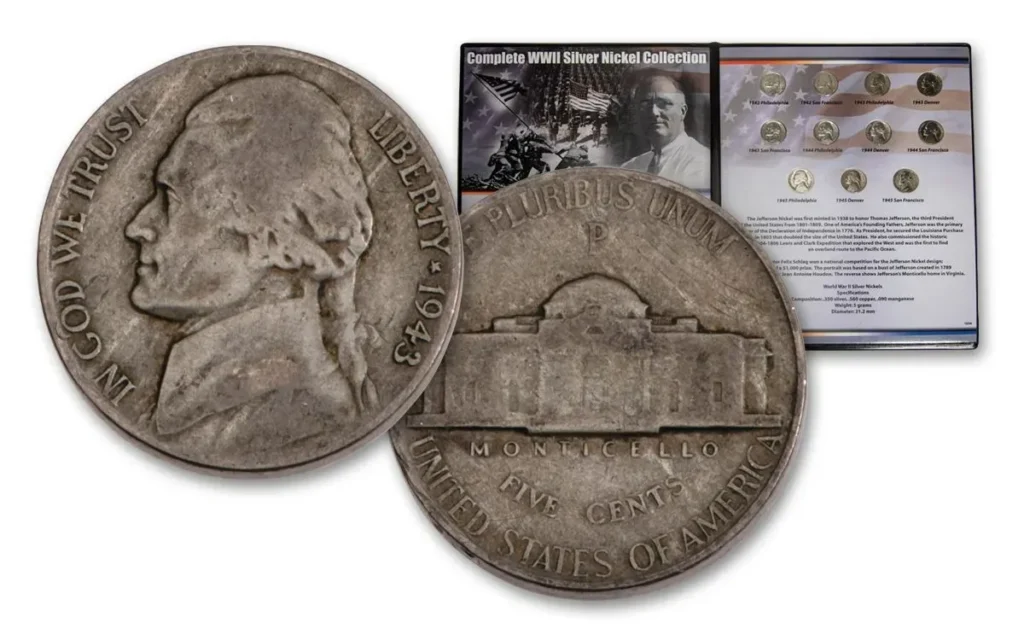1942-1945 Silver War Nickels – During the World War II, the United States released another version of the 5 cent coin-the 1942-1945 Silver War Nickel. Collectors have shown an especial interest in these coins because of the blend used to make them and their historical appeal. The relative material, design of these pieces, how many of them have been manufactured to date, and the present value of their worth in the market would all feature as subjects for this paper.
Design/Composition
During World War II, nickel was in short supply. Nickel was an important metal in the manufacture of war equipment. In order to save this metal, the US Mint altered the composition of the 5 cent coin. From October 8, 1942, to 1945, these coins were made from the following alloy:
- 56% copper
- 35% silver
- 9% manganese
This mix resulted in a 5-gram coin with a diameter of 21.2 millimeters. A large mintmark was perhaps the most significant design feature-that is, the mintmark appeared on the reverse side of the coin and indicated that the coin was wartime composition. It was the first time a mintmark was used on coins struck in Philadelphia.
Production Numbers
The production numbers of the 1942-1945 Silver War Nickel varied depending on each year and mintmark. Here is a breakdown of those years and mintmarks:
| Year | Mintmark | Mintage |
|---|---|---|
| 1942 | P | 57,873,000 |
| 1942 | S | 32,900,000 |
| 1943 | P | 271,165,000 |
| 1943 | D | 15,294,000 |
| 1943 | S | 104,060,000 |
| 1944 | P | 119,150,000 |
| 1944 | D | 32,309,000 |
| 1944 | S | 21,640,000 |
| 1945 | P | 119,408,100 |
| 1945 | D | 37,158,000 |
| 1945 | S | 58,939,000 |
This makes it clear that a lot of these coins were produced during the war years.
Market Value

The value of a 1942-1945 Silver War Nickel depends on different factors, which include the condition of the coin, its scarcity, and its demand. Until January 14, 2025, melt value for the coins is at about $1.71 in terms of today’s silver value.
However, the coins can have numismatic value which is much more than this, especially if they are in the uncirculated or certified conditions. For example, a 1943-D nickel that’s in uncirculated condition fetches a high price.
Important Variations
Collectors must be aware of a few variations that can change the coin’s value:
- 1943/2 Overstrike: In reality, it is overdate variety which was produced as result of overminting of 1942 die on 1943 die. This is considered to be highly valuable because this type of coin was not issued before 1978 except around 85% of the coins have been destroyed.
- Full Steps (FS) Mark: The coins bearing all the steps of Monticello with the engravings that have distinction are known as the ‘full steps,’ and it is expensive to obtain these coins since the engravings are more legible.
Conclusion
The 1942-1945 Silver War Nickels are the epitome of how scarce money was in America during the Second World War as well as the result of the inventiveness of the Americans in that era. Because of their composition, origin, and minimum availability, the individual coins are considered important pieces of any collection. Since they can easily be collected and since their demand is on the rise in the market, they are considered an interesting form of investment by coin collectors.

